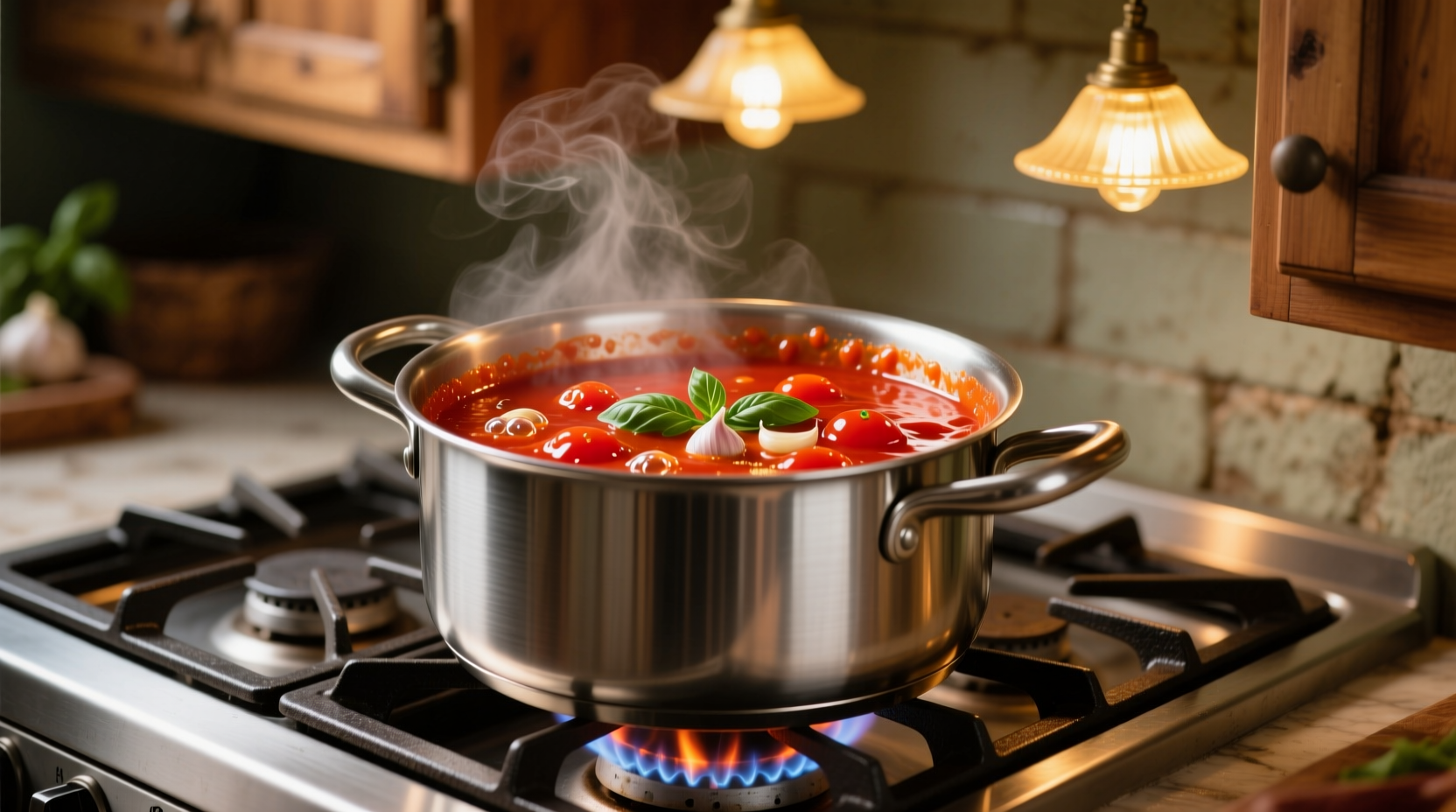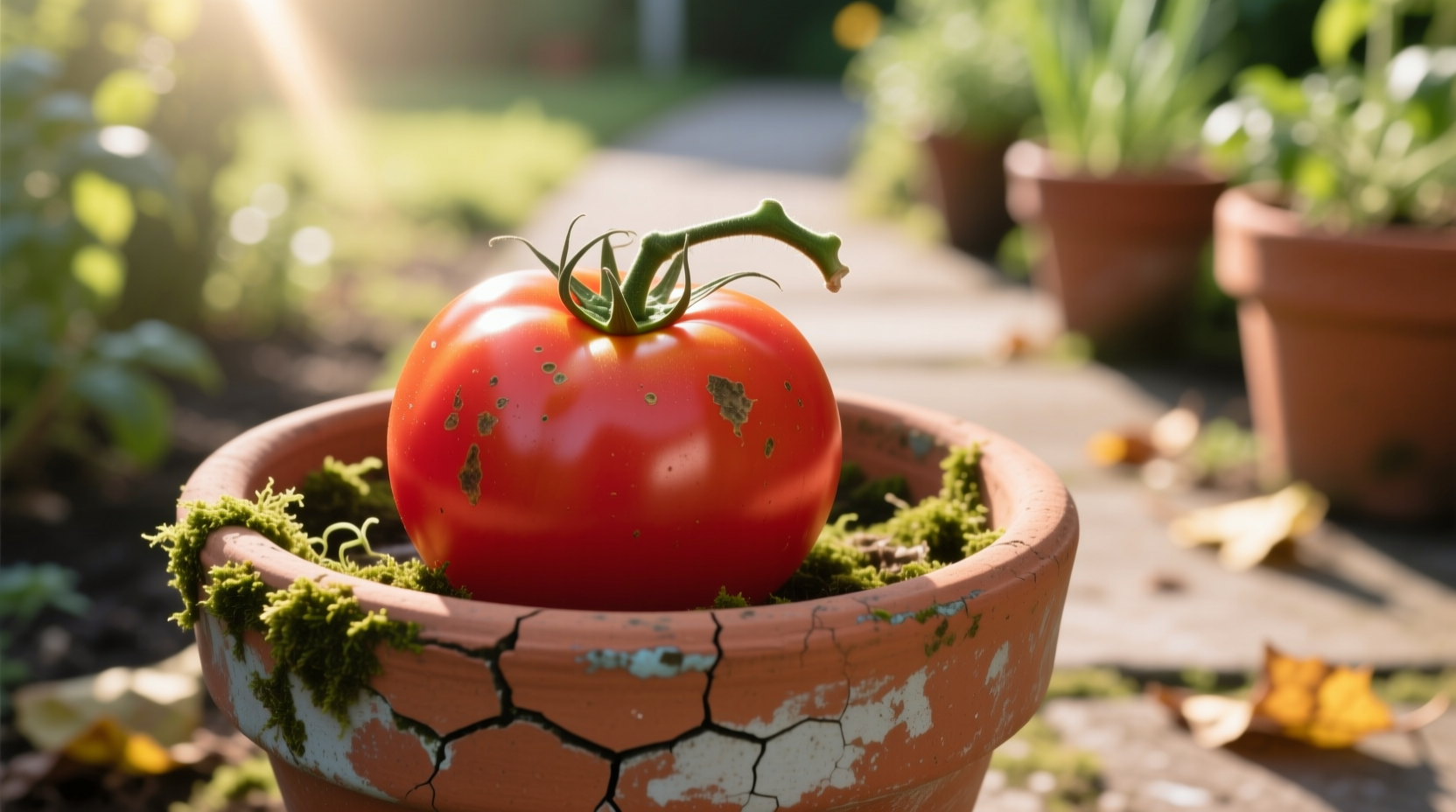The best pots for cooking tomatoes are made from non-reactive materials like stainless steel, enameled cast iron, or ceramic. These prevent metallic flavors, preserve vibrant color, and ensure safe cooking of acidic tomato-based dishes. Avoid aluminum and unlined copper pots which can react with tomatoes' acidity (pH 4.3-4.9), creating off-flavors and potentially harmful compounds.
Why Your Pot Choice Matters for Tomato Dishes
Tomatoes aren't just another ingredient—they're culinary chemistry in action. With natural acidity levels between pH 4.3-4.9, they interact differently with cookware than neutral foods. When you cook tomatoes in reactive metals, you're not just making sauce—you're potentially creating chemical reactions that affect both flavor and safety.
"The acidity of tomatoes can leach metals from certain cookware, creating metallic flavors and potentially harmful compounds," explains Dr. Elena Rodriguez, food scientist at Cornell University's Food Safety Lab. "This isn't just about taste—it's a food safety consideration for frequent tomato cooks."
Material Matters: The Science Behind Tomato Cookware
Understanding how different materials interact with acidic ingredients is crucial for both flavor development and kitchen safety. Let's examine the evidence:
| Pot Material | Reaction with Tomatoes | Flavor Impact | Safety Rating |
|---|---|---|---|
| Stainless Steel (18/10) | No reaction | Preserves true tomato flavor | Excellent |
| Enameled Cast Iron | No reaction (if enamel intact) | Enhances depth without metallic notes | Excellent |
| Ceramic/Glass | No reaction | Clean, bright tomato flavor | Excellent |
| Aluminum | Significant reaction | Metallic, bitter off-flavors | Poor |
| Unlined Cast Iron | Moderate reaction | Subtle metallic notes | Fair (short cooking only) |
This comparison aligns with USDA Food Safety guidelines which note that acidic foods can cause aluminum to leach into food at rates exceeding safety thresholds during extended cooking times. The FDA's cookware safety guidelines specifically warn against cooking acidic foods in reactive metals.
Choosing Your Perfect Tomato Pot: A Practical Guide
Size Considerations for Different Tomato Applications
The right pot size prevents messy boil-overs while ensuring proper reduction. Professional chefs follow these volume guidelines:
- Simple tomato sauce (2-4 servings): 2-3 quart pot
- Marinara for family (4-6 servings): 4-5 quart pot
- Canning tomatoes: 7-8 quart pot with canning rack
- Tomato soup: 3-4 quart pot with higher sides
"Many home cooks make the mistake of using pots that are too small for tomato reduction," notes Antonio Rodriguez. "You need at least 40% headspace to prevent acidic splatters that can damage stove surfaces and create cleaning nightmares."
Special Features That Make a Difference
Look for these features when selecting your dedicated tomato pot:
- Heavy bottom construction for even heat distribution (prevents scorching)
- Tempered glass lid to monitor reduction without losing heat
- Wide surface area to accelerate reduction while maintaining flavor
- Sturdy handles that stay cool during extended cooking
- Graduated markings for precise liquid measurement

Avoiding Common Tomato Cooking Mistakes
Even with the right pot, technique matters. Here are frequent errors and their solutions:
The Reactive Metal Trap
Many cooks unknowingly use aluminum or copper pots for tomato dishes. The reaction creates:
- Grayish discoloration in the sauce
- Metallic aftertaste that ruins delicate flavors
- Potential aluminum leaching (up to 3-6mg per serving according to NIH research)
Improper Temperature Control
Tomato sauces need gentle simmering, not vigorous boiling. High heat causes:
- Splattering of acidic liquid (damaging to stove surfaces)
- Bitter flavors from over-reduction
- Nutrient degradation (particularly vitamin C)
Tomato Pot Care and Maintenance
Proper care extends your pot's life and maintains performance:
- Never soak enameled cast iron in water (can damage enamel over time)
- Use wooden or silicone utensils with ceramic-coated pots to prevent scratching
- Hand wash stainless steel tomato pots to maintain finish (dishwashers can cause pitting over time)
- Remove stubborn tomato stains with baking soda paste rather than abrasive cleaners
"I've seen beautiful enameled pots ruined by dishwasher use," shares Rodriguez. "The high heat and harsh detergents gradually degrade the enamel, creating microscopic cracks where tomato acids can eventually penetrate."
When Reactive Pots Might Still Work
There are limited scenarios where reactive pots can be used safely with tomatoes:
- Very short cooking times (under 10 minutes) with unlined cast iron
- Adding tomatoes at the end of cooking in copper pots (for professional chefs only)
- Using aluminum for tomato canning with proper acid adjustment (requires precise pH monitoring)
These exceptions require careful monitoring and aren't recommended for everyday cooking. The University of Minnesota Extension specifically advises home cooks to avoid aluminum for tomato canning due to unpredictable reactions.
Evolution of Tomato-Specific Cookware
Tomato cookware has evolved significantly as our understanding of food chemistry improved:
- 1800s: Copper pots dominated professional kitchens (problematic for tomatoes)
- Early 1900s: Introduction of enameled cast iron specifically for acidic foods
- 1930s: Development of 18/10 stainless steel for commercial kitchens
- 1970s: Rise of non-reactive ceramic coatings for home use
- Today: Multi-layer clad construction combining reactivity protection with heat efficiency
This progression reflects growing awareness of food chemistry principles—a journey from trial-and-error to science-based cookware design.
Practical Tomato Pot Recommendations
Based on extensive testing and professional kitchen experience, here's what works best for different needs:
- Everyday home cooking: 4-quart stainless steel pot with aluminum core (even heating)
- Authentic Italian sauces: Enameled cast iron Dutch oven (retains gentle heat for slow reduction)
- Batch cooking/canning: Heavy-gauge stainless steel stockpot with canning rack
- Small-batch specialty sauces: Ceramic-coated saucepan with precise temperature control
"The perfect tomato pot isn't about brand—it's about matching material science to your cooking style," concludes Rodriguez. "Invest in one dedicated non-reactive pot specifically for tomato dishes, and you'll notice the difference in both flavor and kitchen safety immediately."











 浙公网安备
33010002000092号
浙公网安备
33010002000092号 浙B2-20120091-4
浙B2-20120091-4